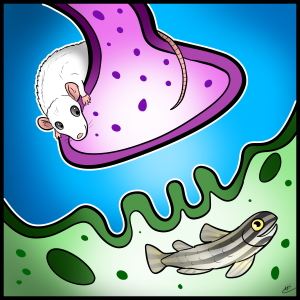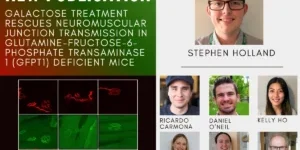New publication: A nomenclature and classification for the congenital myasthenic syndromes: preparing for FAIR data in the genomic era
Our new publication on developing a nomenclature for the congenital myasthenic syndromes is now available online at the Orphanet Journal of Rare Diseases website. In this paper we worked with CMS experts to classify the individual CMS types as a foundation for their use in computer-based diagnostic and decision-support systems in which it is important to differentiate individual entities, for example to be able to clearly point out which CMS types should receive which therapies.
Read the paper in full at the OJRD website here.
Abstract:
Background: Congenital myasthenic syndromes (CMS) are a heterogeneous group of inherited neuromuscular disorders sharing the common feature of fatigable weakness due to defective neuromuscular transmission. Despite rapidly increasing knowledge about the genetic origins, specific features and potential treatments for the known CMS entities, the lack of standardized classification at the most granular level has hindered the implementation of computer-based systems for knowledge capture and reuse. Where individual clinical or genetic entities do not exist in disease coding systems, they are often invisible in clinical records and inadequately annotated in information systems, and features that apply to one disease but not another cannot be adequately differentiated.
Results: We created a detailed classification of all CMS disease entities suitable for use in clinical and genetic databases and decision support systems. To avoid conflict with existing coding systems as well as with expert-defined group-level classifications, we developed a collaboration with the Orphanet nomenclature for rare diseases, creating a clinically understandable name for each entity and placing it within a logical hierarchy that paves the way towards computer-aided clinical systems and improved knowledgebases for CMS that can adequately differentiate between types and ascribe relevant expert knowledge to each.
Conclusions: We suggest that data science approaches can be used effectively in the clinical domain in a way that does not disrupt preexisting expert classification and that enhances the utility of existing coding systems. Our classification provides a comprehensive view of the individual CMS entities in a manner that supports differential diagnosis and understanding of the range and heterogeneity of the disease but that also enables robust computational coding and hierarchy for machine-readability. It can be extended as required in the light of future scientific advances, but already provides the starting point for the creation of FAIR (Findable, Accessible, Interoperable and Reusable) knowledgebases of data on the congenital myasthenic syndromes.







